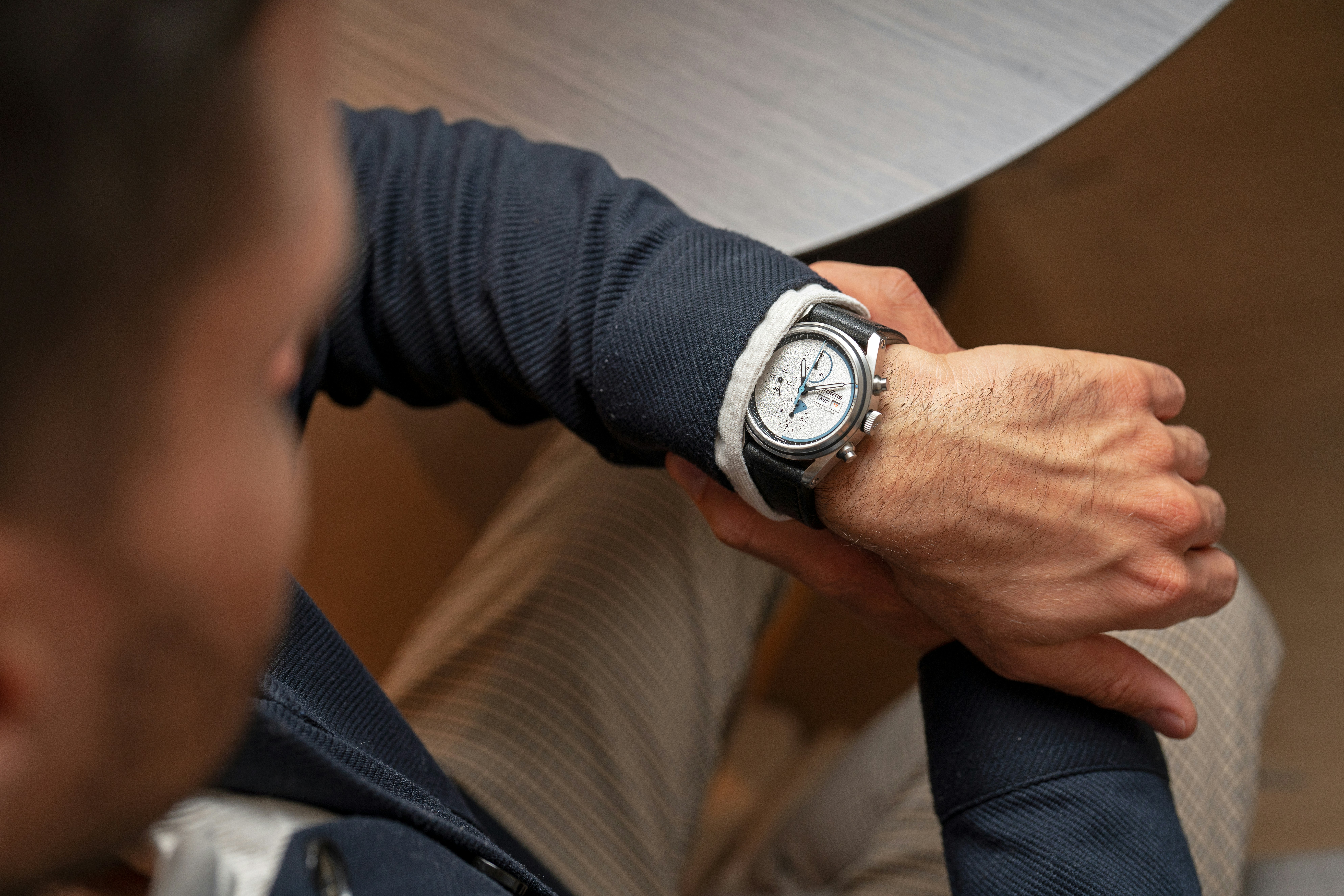Chronograph
The term chronograph refers to a watch or another device with two or more independent functions. For example, one function features the time of the day and the other measures brief periods of time (a stop watch). Various counters of a chronograph can be started and stopped independently of each other.
Example: Rolex Submariner and Breitling Navitimer are both chronographs because of the additional functions that these watches perform independently of telling the time. Rolex Yachtmaster II, however has a specific chronograph name: Regatta Chronograph. The Regatta Chronograph is equipped with an extremely precise, fly-back timer that can be set to the official clock of a yacht race and is extremely helpful during yacht races.
One Button Chronograph
Mono-Poussier or a One Button Chronograph is the original chronograph and only had one button and one function.
Flyback Chronograph
Retour-en-Vol or the Flyback Chronograph is a chronograph in which a second button can be pushed while the chronograph is running and restart or rest all counters from zero.
Split-Second Chronograph
Split-Second Chronograph or Rattrapante is a chronograph with three push-pins on the case. This chronograph also has two second-hands, one on top of the other.
Chronometer
Simply put, the term chronometer is another way of saying “watch”. However, for a watch to be considered an official chronometer, it has to be certified by Controle Officiel Suisse Des Chronometers (COSC). Every officially certified chronometer is given a unique certification identification number by COSC.
COSC tests the watch movements over a span of multiple days in a variety of positions, pressures and temperatures to determine the “mean daily rate” or the amount of time lost or gained by a watch under normal (for the watch) conditions. A standard, mechanical, men’s watch must maintain an accuracy of -4 to +6 seconds per day or 99% accuracy to earn the COSC certification of the Official Certified Chronometer.
Quartz Movements
Quartz movements are not usually certified by COSC in the large part because even a cheap quartz movements can outperform most of the COSC tests. In response to that COSC has established a separate test standard for the quartz movements. The mean daily rate fluctuation for a quartz movement is +/- 0.2 seconds per day. The test for COSC certification of a quartz movement is extremely expansive and therefore most watch manufacturers forego this step making Officially Certified Quartz Chronometer movements extremely rare.
Superlative Chronometer vs. Certified Chronometer
Rolex came up with the term “Superlative Chronometer” as one of their marketing tools to distinguish their watches from the other COSC certified chronometers. Any watch that has received the COSC certification is an officially certified chronometer and should have the markings on the movement to delineate that. There are no “grades” or “levels” of chronometer certification so don’t be fooled by words like “superlative” or “certified” proceeding the word chronometer.
Waterproof vs Water Resistant
There is no such thing as a waterproof watch. Legally, watches are only delineated as water resistant with the submersion depth clearly outlined in the booklet or other paperwork that accompanies the watch. If you are purchasing a pre-owned watch with no paperwork, contact the manufacturer or a watchmaker to determine the depth to which your watch is water resistant.
Water Resistant
A watch that is marked with the words “Water Resistant” simply means that the watch is protected from humidity. Simply put, if you get caught in the rain or splash water on your watch while washing your hands, it is likely that the watch mechanism will be safe from damage. Having a water resistant watch doesn’t necessarily mean that it is safe to swim or shower with the watch on.
This is also the case with watches that are marked “water resistant to 100 meters”. Although the pool you are planning to dive into might be less than 100 meters deep, the instant change of pressure at the moment of the dive might very well exceed the recommended amount and force water through the rubber gaskets that make your watch water resistant.
Basically, diving or showering with any watch that isn’t specifically designed for getting wet may not be a great idea.
Vintage Diving Watches
All watches should be tested for water resistance at least once a year (more frequently if the wearer spends a lot of time in sandy or salt water environments as both sand and salt are extremely corrosive). It is not generally recommended to dive with vintage diving watches due to the greater potential of gasket failure. You should always get your vintage watches serviced and tested by a professional watchmaker before exposing them to humid and potentially corrosive environments.
Helium Escape Valve or Helium Release Valve
Helium Release Valve is a spring loaded one way valve that is designed to release any gas buildup inside the diving watch during decompression to prevent damage to the watch and/or the movement of the watch.
Divers that operate at great depth usually use a special mixture of gasses to breath. Some of these breathing mixes contain gasses such as helium. Helium gas atoms are so small that they frequently penetrate the o-rings and seals of the deep sea diving watches and wreak havoc under decompression. The gas particles expand and can destroy the movement of the watch or pop the crystal.
Rolex and Omega found a solution to this common problem by introducing a one way, spring loaded valve.

